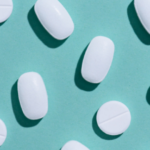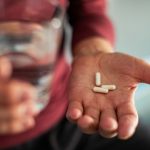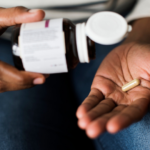In the last few years, marketing and testimonials for ‘glizzy pills’ — a social media slang for ashwagandha supplements — have included hyped-up claims of boosted testosterone, raging libidos and even increased penis size. But do these claims stack up? Here’s what you need to know about ashwagandha supplements and their impact on testosterone.
What is ashwagandha?
Ashwagandha — also known as Withania Somnifera, winter cherry and Indian ginseng — is a herb that’s part of the nightshade family. It’s been used in Ayurveda (a traditional system of medicine from the Indian subcontinent) for over 3000 years. It’s also labelled an adaptogen — a subcategory of herbs that claims to improve the body’s ability to cope with stress. Some people have claimed that ashwagandha helps reduce stress and anxiety, boost testosterone and male fertility and improve athletic performance.
Traditional use vs. scientific evidence of ashwagandha
“Ashwagandha has a long history of traditional use in supporting male hormonal balance and reproductive health,” says Chun Guang Li, Professor of Pharmacology at NICM Health Research Institute and Western Sydney University.
However, this does not equate to evidence-based benefits. The practice of Ayurveda has a personalised approach that focuses on maintaining balance in the body, mind and spirit to promote overall well-being and prevent disease. It uses herbal remedies in tandem with other methods such as diet, yoga, massage and lifestyle adjustments. Consequently, it is very difficult to single out the effects of a single herb simply from its use in Ayurvedic tradition, at least not enough to meet modern scientific standards. “Limited studies suggest that ashwagandha may slightly improve testosterone levels in males,” says Li. “However, the effects are marginal, the sample sizes are small, and there are also studies reporting no significant benefit. Further research with larger sample sizes is needed.”
Does ashwagandha boost testosterone?
There’s a great maxim in human physiology that says that our body needs to pick its battles to keep us chugging along. So, in times of high or prolonged stress, testosterone production is suppressed because your body reckons there are more important things to take care of.
A small Australian study of overweight men aged 40 to 70 taking ashwagandha found that the modest increases in dehydroepiandrosterone sulfate (DHEA-S – a steroid hormone that is a building block to make testosterone) and, to a lesser extent testosterone (15% increase), were not sustained. The men had taken a supplement for eight weeks then stopped, and another eight weeks later testosterone levels had dropped 11% and DHEA-S by 17% from peak values. This suggested to the authors that ashwagandha has to be taken on an ongoing basis to sustain changes, or it needs to be taken for a longer duration than eight weeks for more lasting changes.
Of all the potential therapeutic effects of ashwagandha, stress reduction — and specifically the levels of the stress hormone cortisol — is the one with the highest level of clinical evidence behind it. The key ingredient for this is a bioactive compound called Withanolide, which helps modulate the activity of certain neurotransmitters (chemical messengers that affect communication between nerves).
A systematic review of human trials found that taking ashwagandha for eight weeks reduces morning cortisol levels. Another systematic review found that there is a favourable effect of ashwagandha supplementation on measures of personal stress.
A review article addressing ashwagandha’s potential role in sports performance suggested that the impact of ashwagandha on testosterone and cortisol could be facilitated by ashwagandha’s established actions on sleep quantity and quality, as well as its downregulation of inflammation and oxidative stress in the body.
Ashwagandha dosage and side effect
“The safe dosage of ashwagandha depends on the nature and quality of the product (e.g., root powders, extracts) and can vary,” says Li.
“Low doses are generally considered safe. However, ashwagandha use has been associated with side effects such as gastrointestinal symptoms and, in rare cases, liver injury. There are also safety concerns for individuals with certain chronic conditions or diseases.” The most commonly reported side effects are mild stomach upsets and nausea. These are generally resolved after you stop taking the supplement. On products listed on the Australian Register of Therapeutic Goods (they will have an ‘AUST L’ on the label), the dose will equate to the amount of ashwagandha ‘extract’ in the ingredients.
Who shouldn’t use ashwagandha
A report on the herb published by the CSIRO recommended caution when using ashwagandha products with:
There have also been warning that ashwagandha products should be avoided by:
In 2024, the TGA issued a warning that products containing ashwagandha have a “very rare” risk of causing liver injury. Up to February 2024, the agency recorded seven reports where there was enough evidence to link ashwagandha to liver injury.
Note that the TGA do not regulate the safety or quality of medicines bought online from overseas – regulated medicines will have an AUST R or AUST L number on the label.
Early signs of liver injury include:
If these occur, stop taking the medicine and seek medical advice. Sudden vomiting or diarrhoea after one to two doses is usually just an acute reaction (not liver damage) that settles down when you stop taking the product.
















